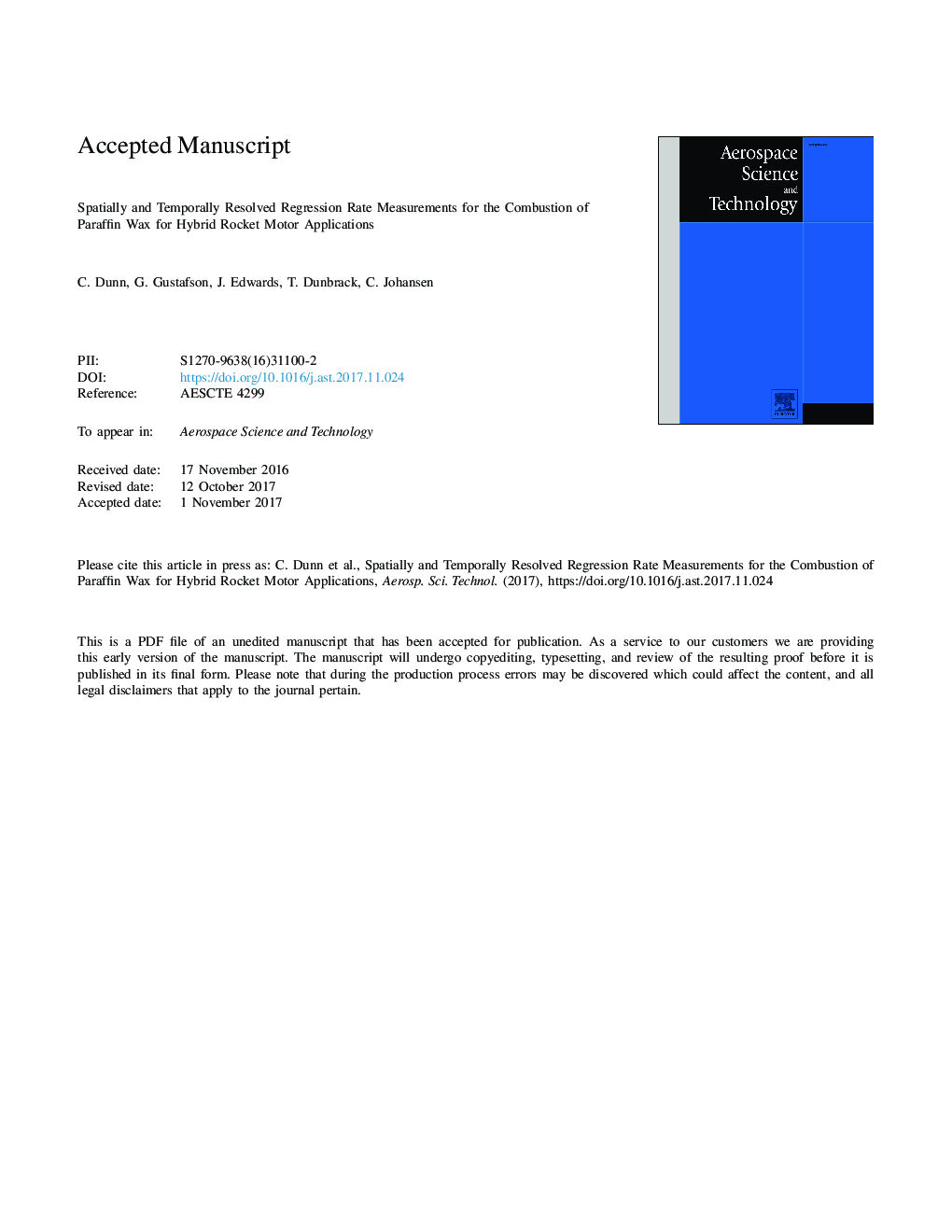| Article ID | Journal | Published Year | Pages | File Type |
|---|---|---|---|---|
| 8058313 | Aerospace Science and Technology | 2018 | 22 Pages |
Abstract
Spatially and temporally resolved regression rate measurements were obtained for paraffin wax combustion in a two-dimensional slab-type rocket motor configuration using an optically accessible chamber. The use of high-intensity backlighting and a one-dimensional gray moment edge detection allowed for sub-pixel accuracy for the regression rate of the fuel-grain surface. At higher oxidizer (gaseous oxygen) mass fluxes approximately 50% of the fuel grain surface experienced a relatively uniform regression rate (±15%) and an increasing trend with streamwise position. For lower mass fluxes more scatter was observed and the average regression rate decreased slightly along the length of the grain. The spatially averaged regression rate was found to be constant after approximately two seconds of an ignition transient. A novel method of removing the ignition wires at the slab's leading edge to avoid artificial flow obstruction was demonstrated. Visualization of the entire transient ignition process as well as flame propagation along the slab length was obtained. The streamwise pressure gradient of the gaseous oxidizer was controlled by modifying the combustor cross-sectional area. Favorable pressure gradients were correlated to an amplification of the regression rate. Increased convective heat transfer associated with a low shape factor typical of a favorable pressure gradient boundary layer was proposed as the mechanism responsible for the increased regression rate. Flame progression rate was measured for various flow conditions and was shown to increase with increasing axial mass flux.
Related Topics
Physical Sciences and Engineering
Engineering
Aerospace Engineering
Authors
C. Dunn, G. Gustafson, J. Edwards, T. Dunbrack, C. Johansen,
